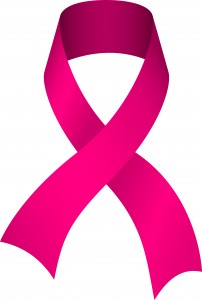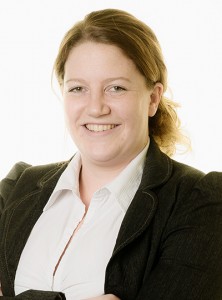 Most people have heard about breast cancer, but the campaign aims to go beyond this to ensure that women are aware of the signs and symptoms of the disease and how to detect them early. Early detection is key to giving yourself the best possible chance of beating the disease!
Most people have heard about breast cancer, but the campaign aims to go beyond this to ensure that women are aware of the signs and symptoms of the disease and how to detect them early. Early detection is key to giving yourself the best possible chance of beating the disease!
Signs and symptoms of breast cancer
- A change in how the breast or nipple feels
- A change in the breast or nipple appearance
- Any nipple discharge, particularly clear or bloody discharge (other than breastfeeding women)
Self-examination
It is recommended that all women check their breasts once a month. This means that you become aware of what is normal for you and you can then spot any changes quickly and report these to your doctor for further advice. If you do notice any lumps or changes in the breast, don’t immediately think you have breast cancer! 8 out of 10 breast lumps are not cancerous. However, it is really important to report any changes to your doctor quickly so they can be ivestigated further.
This is how the National Breast Cancer Foundation says you should self-examine your breasts:
1) In the Shower
Using the pads of your fingers, move around your entire breast in a circular pattern moving from the outside to the center, checking the entire breast and armpit area. Check both breasts each month feeling for any lump, thickening, or hardened knot. Notice any changes and get lumps evaluated by your healthcare provider.
2) In Front of a Mirror
Visually inspect your breasts with your arms at your sides. Next, raise your arms high overhead.
Look for any changes in the contour, any swelling, or dimpling of the skin, or changes in the nipples. Next, rest your palms on your hips and press firmly to flex your chest muscles. Left and right breasts will not exactly match—few women’s breasts do, so look for any dimpling, puckering, or changes, particularly on one side.
3) Lying Down
When lying down, the breast tissue spreads out evenly along the chest wall. Place a pillow under your right shoulder and your right arm behind your head. Using your left hand, move the pads of your fingers around your right breast gently in small circular motions covering the entire breast area and armpit.
Use light, medium, and firm pressure. Squeeze the nipple; check for discharge and lumps. Repeat these steps for your left breast.
Risk factors
There are certain factors that may increase the risk of getting breast cancer. If any of these factors relate to you, you should discuss getting a mammogram with your doctor – if you haven’t done so already:
- you are a woman over 40 years old
- you have previously been diagnosed with breast or ovarian cancer
- your mother, sister or daughter has been diagnosed with breast cancer
- you have tested positive for a gene mutation such as BRCA1 or BRCA2 as they are linked with being at a higher risk of breast cancer
Mammograms
It is recommended that all women aged 40 and over should have a mammogram every 1-2 years. If you are under 40, but have recognised risk factors for breast cancer, your doctor can advise you whether you need to have mammograms now and how often to have these repeated.
A mammogram is a type of x-ray that examines the breast tissue for any suspicious areas. They can pick up the very early stages of breast cancer, even before you have any symptoms or lumps. This is why mammograms are also a vital part of screening for breast cancer in addition to your self-examinations at home.
How can we help?
Here at Graysons we recognise the devastating, and in some cases fatal, effect that a delayed diagnosis or misdiagnosis of cancer can have.
We understand the importance of compensation to you as it can greatly improve quality of life for you and your family and provide the care and security that is needed.
If you would like to talk to a member of our specialist team then please contact us for a confidential and free discussion today.
You can find out more about the failure to diagnose or misdiagnosis of cancer on our web pages.
You can get more help and advice relating to breast cancer from National Breast Cancer Foundation and Breast Cancer Care.
By Heather Smith, medical negligence solicitor

